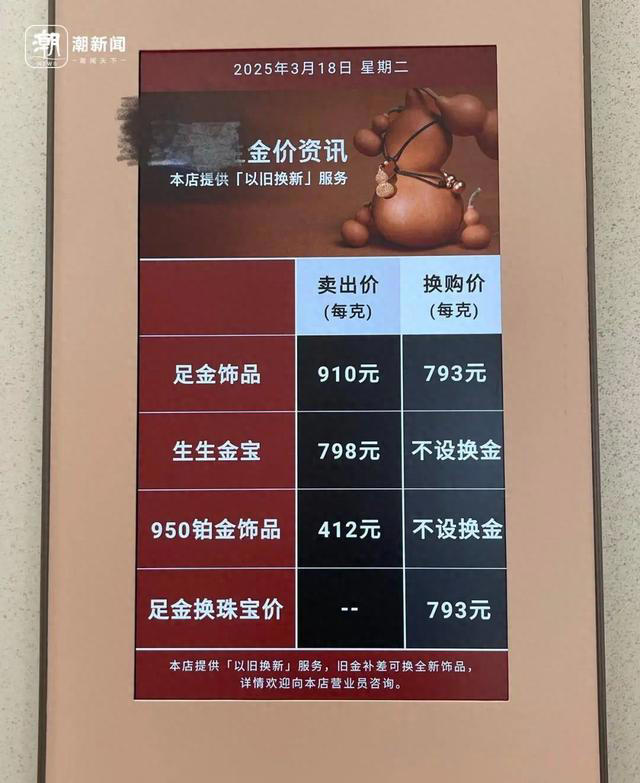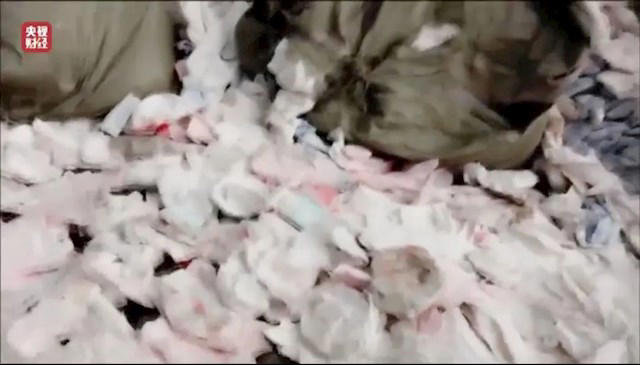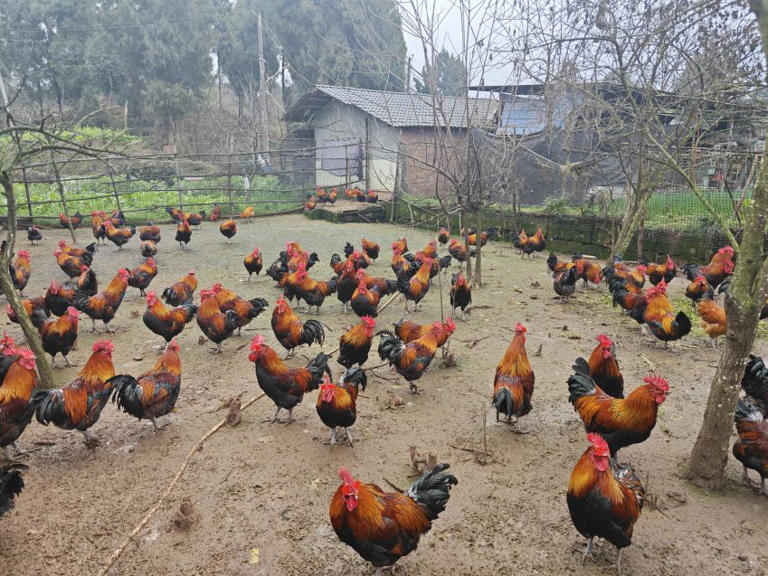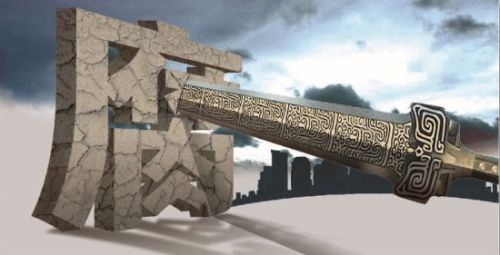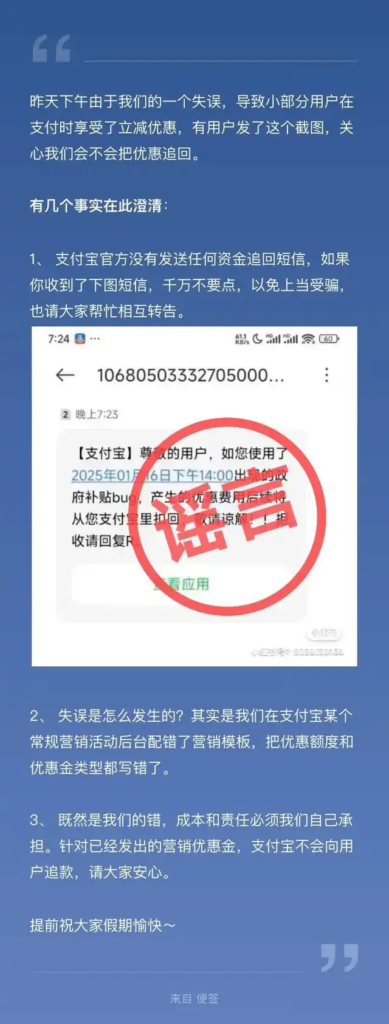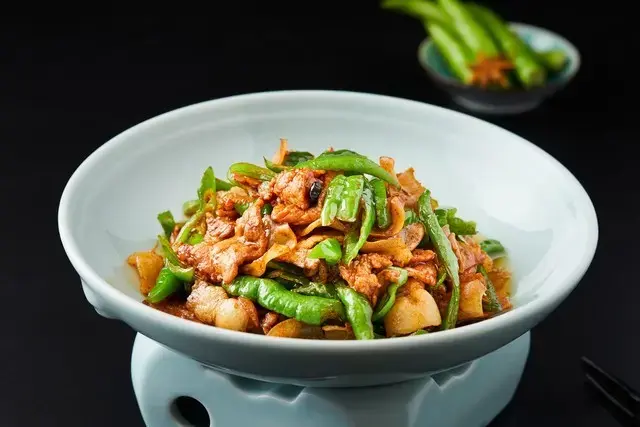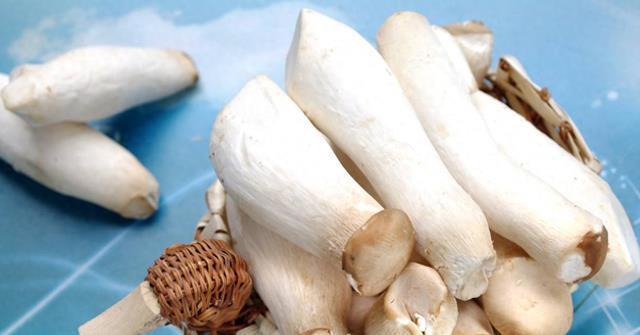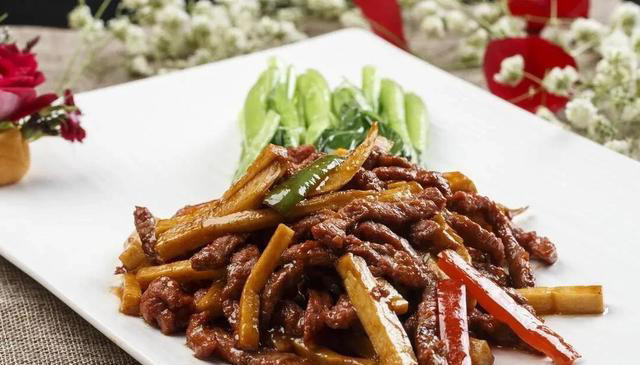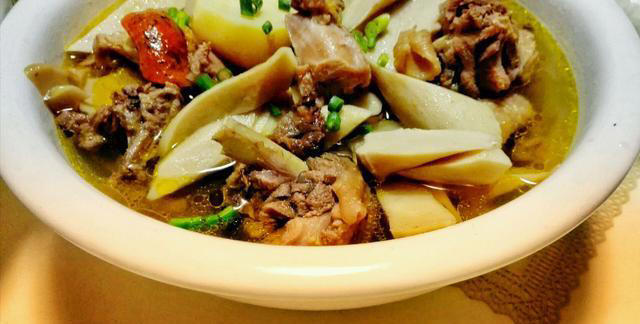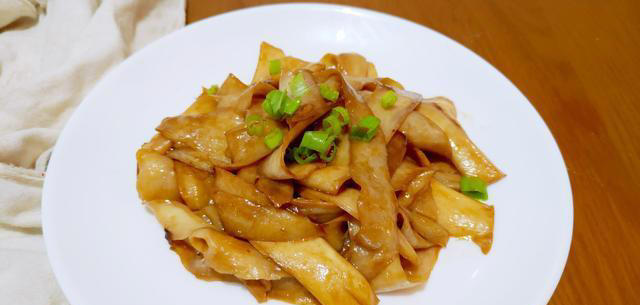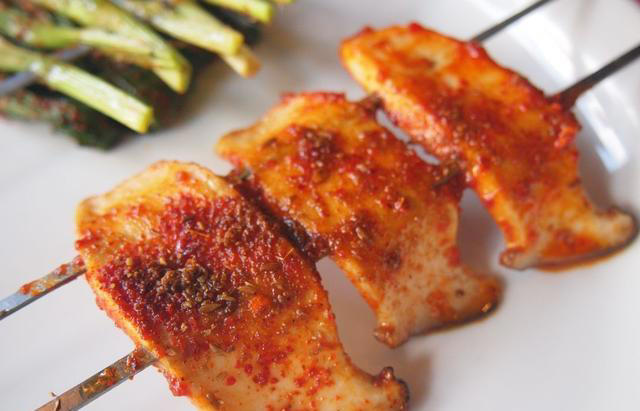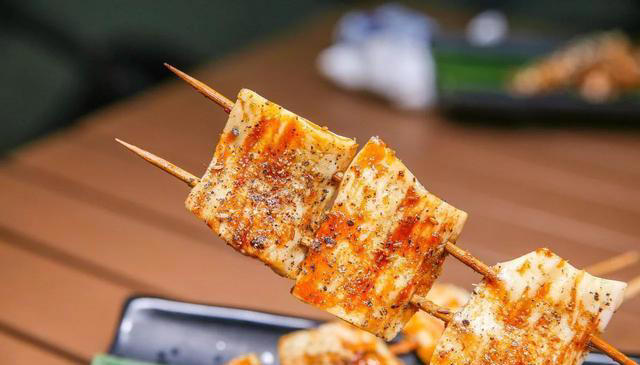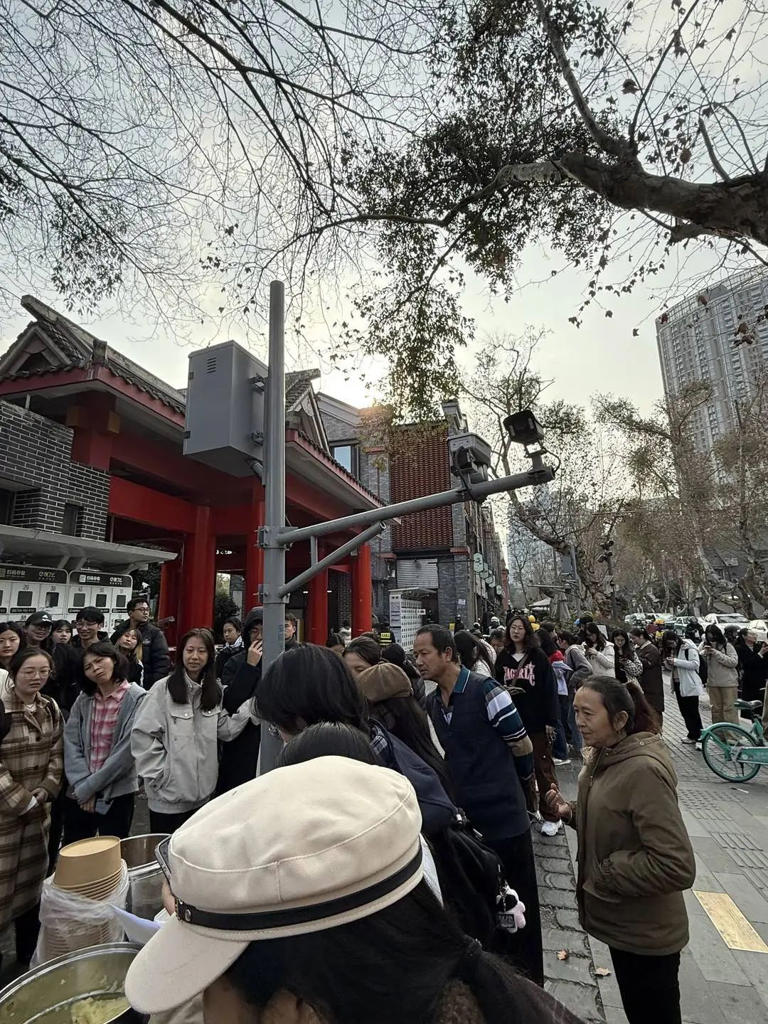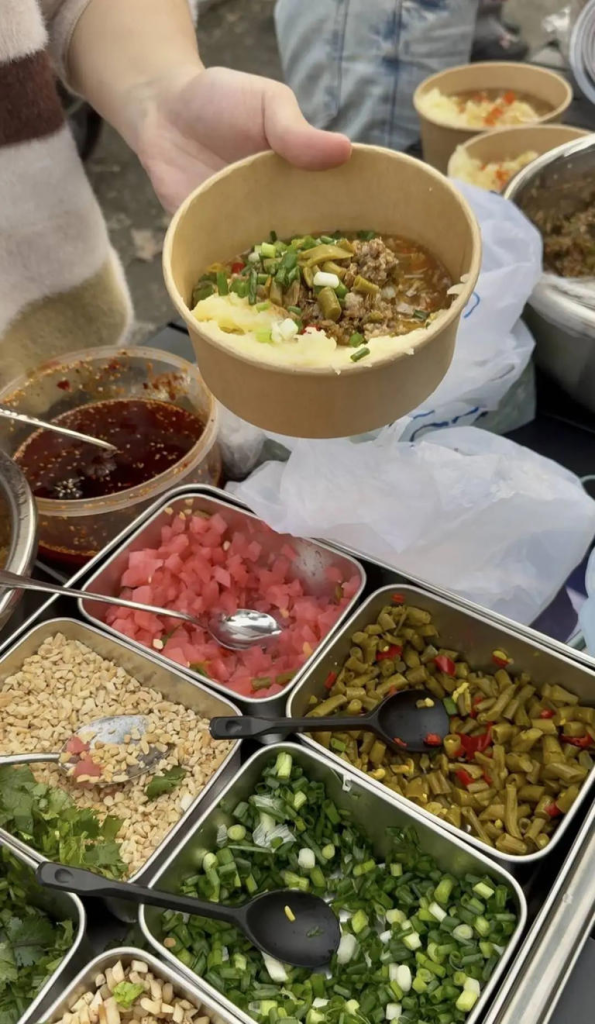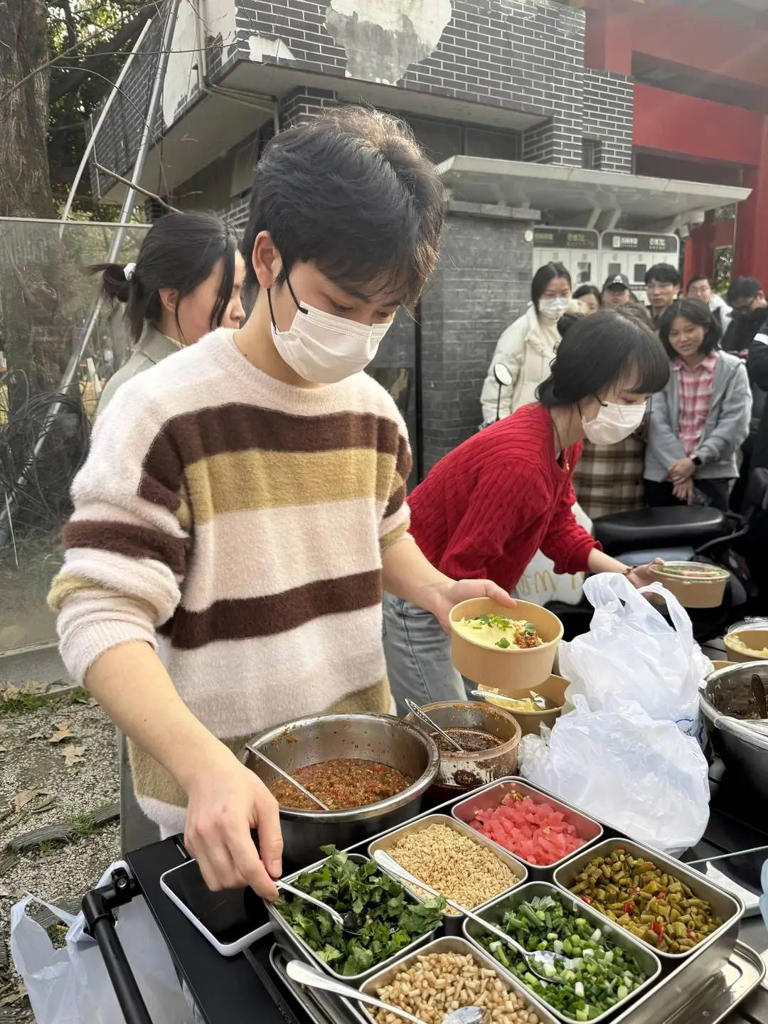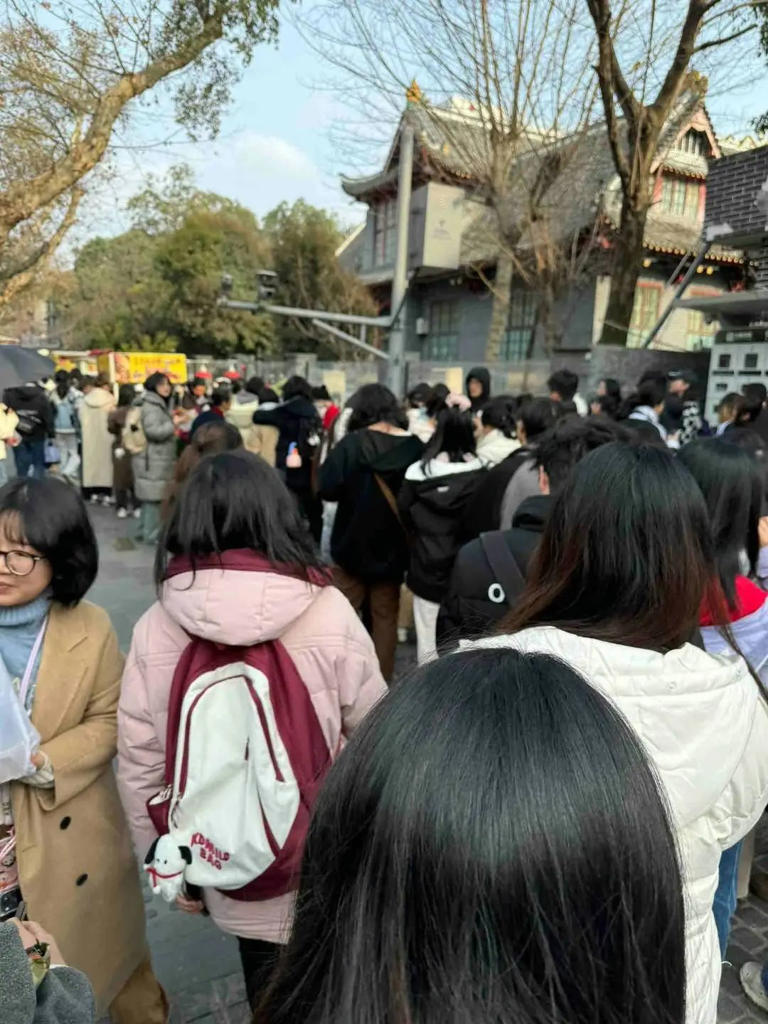On February 5, the first working day after the Spring Festival holiday, Guangdong focused on the theme of “building a modern industrial system” and held a provincial high-quality development conference. Guangzhou, Shenzhen and other cities spoke on the spot, set out key points, posted goals, and set off in the spring.
The Guangdong-Hong Kong-Macao Greater Bay Area, a “9+2” urban agglomeration composed of Guangzhou, Shenzhen, Zhuhai, Foshan, Huizhou, Dongguan, Zhongshan, Jiangmen, Zhaoqing, Hong Kong and Macao, has created 1/9 of the country’s total economic output with less than 0.6% of the country’s land area, and is one of the regions with the highest degree of openness, economic vitality and innovation vitality in China.
Over the past five years since the release of the Outline Development Plan for the Guangdong-Hong Kong-Macao Greater Bay Area, the three places have made concerted efforts to move forward towards integration, innovation and strength, and the total economic output of the Greater Bay Area has risen from over 10 trillion yuan to over 14 trillion yuan. In 2025, the work report of the Guangdong Provincial Government will again take “the new positioning of the Guangdong-Hong Kong-Macao Greater Bay Area as ‘one point and two places’, and better play the role of a power source for high-quality development” as the first priority to promote the integration of the Greater Bay Area market, enhance innovation capabilities and radiate and drive role, and accelerate the construction of a world-class Greater Bay Area and the best developed Bay Area.
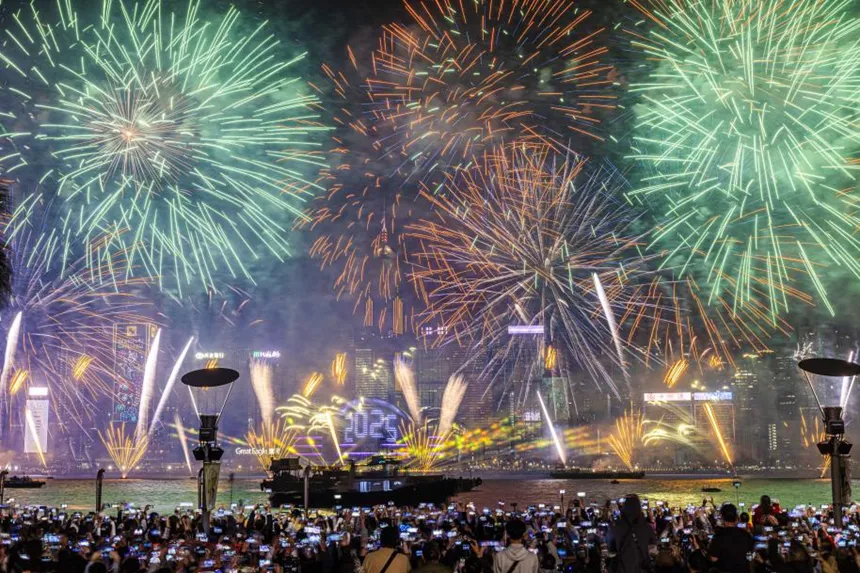
On Chinese New Year’s Eve, citizens and tourists count down together in Victoria Harbour in Hong Kong to welcome 2025. Courtesy of the Hong Kong Tourism Board
“My Strengths”, “Your Resources”
The Shenzhen-Hong Kong Science and Technology Innovation Co-operation Zone in the Loop is at the forefront of Shenzhen-Hong Kong science and technology innovation cooperation.
On the morning of January 14, Wu Guosheng, CEO of Zhongda Coding Co., Ltd., set off from Hong Kong and drove for about 30 minutes to arrive at the Shenzhen Park of the Hetao Cooperation Zone. “I come here three days a week and work with the Shenzhen team.” He said, “Shenzhen and Hong Kong have become like ‘same city’ to me. ”
With “one river, two banks, one district and two parks”, the Hetao Cooperation Zone has gathered more than 200 high-end scientific research projects and 15,000 scientific researchers to deeply share the innovation resources of the two places.
Taking advantage of the construction of the Greater Bay Area and the platform of the Hetao Cooperation Zone, CUHK Coding has opened up a broader space for development. “We have brought Hong Kong’s product technology to Shenzhen, and cross-border data business has opened up markets in Foshan, Guangzhou, Nansha, etc.” Wu Guosheng introduced.
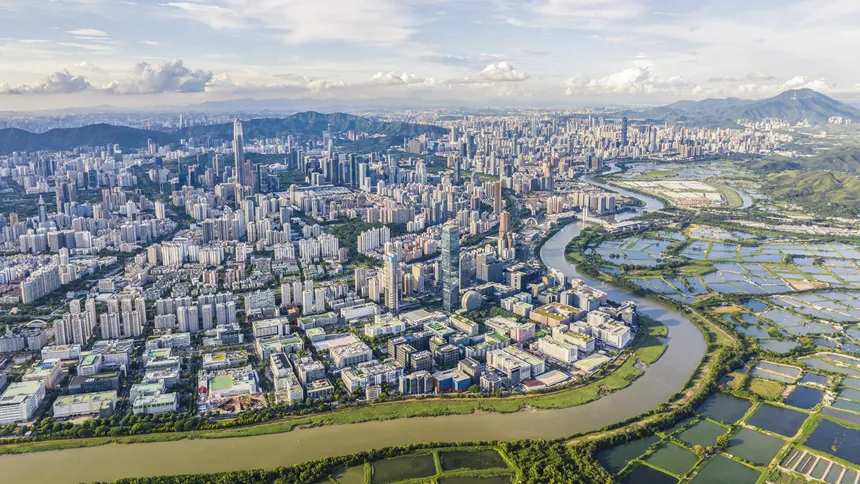
The scenery of the “one river and two banks” of the Shenzhen-Hong Kong Science and Technology Innovation Co-operation Zone in the Hetao. Photo by Wu Shukai
Hong Kong has strong scientific research strength, and Shenzhen has a high degree of industrial completeness, complementing each other’s advantages and promoting each other. At cross-border borders, the two places have issued a “joint policy package” and launched a pilot project of “Science and Technology Connect”, so as to continuously expand scientific and technological innovation, the “greatest common divisor” of Shenzhen-Hong Kong cooperation.
In November 2024, the Hong Kong SAR Government announced the “Outline for the Development of the Hong Kong Park in the Shenzhen-Hong Kong Innovation and Technology Co-operation Zone in the Loop”, which forms an overall puzzle with the planning of the Shenzhen Park and realizes the strategic “game of chess”.
With the deepening of the integration of the Greater Bay Area and the continuous optimization of the city’s division of labor and cooperation, “my advantages” have become “your resources”, and the resonance of science and technology innovation and industrial synergy have become more and more obvious.
In the smart workshop of the Guangdong-Macao In-Depth Cooperation Zone in Hengqin, the robotic arm is running at high speed, and one by one the traditional Chinese medicine products are off the production line, printed with the “Made in Macao” series of logos, and rushed to the world.
Traditional Chinese medicine (TCM) is one of Macao’s brand industries and a key area for the development of Hengqin. Many Macao pharmaceutical companies have released their production capacity to Hengqin, using the new “medicine” key of “Macao medicine, made in Hengqin” to open up new space for industrial increment.
Macao youth Wong Chi Choi has keenly grasped the opportunities in Hengqin and Macao. In 2020, Wong Chi Choi’s molecular company landed in Hengqin, and in 2024, it will become one of the first companies to receive the “Macao Supervised Manufacturing” series of labels. “The series logo helps us open up a wider market.” He said that he would give full play to the advantages of cooperation between Hengqin and Macao to promote the introduction of traditional Chinese medicine into Portuguese-speaking countries and ASEAN countries.
Looking at the global science and technology innovation map, the 56,000-square-kilometer Guangdong-Hong Kong-Macao Greater Bay Area is particularly eye-catching: the Shenzhen-Hong Kong Loop and Guangdong-Macao Hengqin “two points” are united, the Guangzhou-Shenzhen-Hong Kong and Guangzhou-Zhuhai-Macao “two corridors” meet each other, 31 Guangdong-Hong Kong-Macao joint laboratories have been established one after another, and 9 major scientific and technological infrastructures are operating efficiently……
Guangdong, Hong Kong and Macao have deepened their cooperation in science and technology, and the Greater Bay Area has been growing in strength. In the Global Innovation Index, the “Shenzhen-Hong Kong-Guangzhou” science and technology cluster has ranked second in the world for five consecutive years.
“The difference of the system”, “The benefit of the system”
From November to April of the following year, it is the harvest season of Taishan, Jiangmen, the “hometown of oysters”. In the farm, batches of mature oysters are salvaged ashore and sent to Zhuhai, Hong Kong and Macao through the Huangmaohai cross-sea channel, becoming a delicacy on the table of diners in the Greater Bay Area.
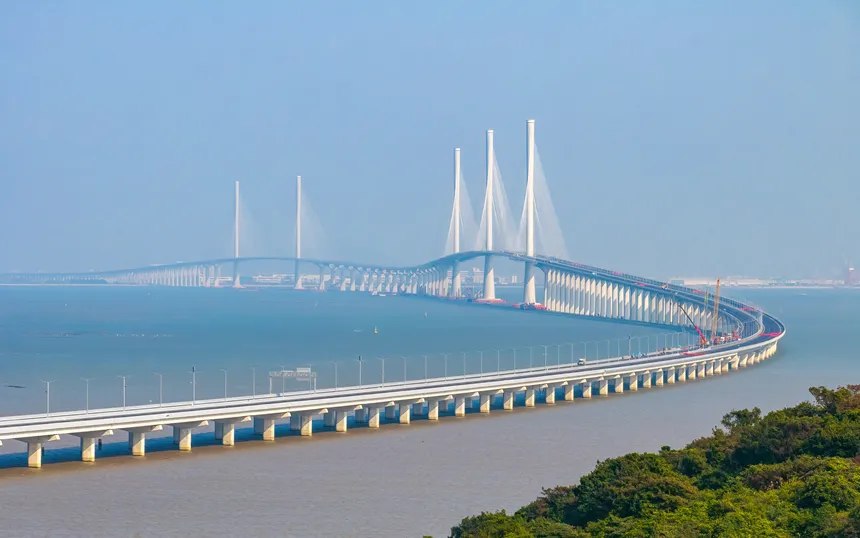
The Huangmaohai cross-sea passage shortens the driving time between Zhuhai and Jiangmen from more than one hour to 30 minutes. Photo by Fung Chu-chai
In the past, Jiangmen Taishan and Zhuhai Jinwan were separated by a water, and the traffic was not smooth. In December 2024, the Huangmaohai cross-sea passage will be officially opened to traffic, connecting the Hong Kong-Zhuhai-Macao Bridge to the east and the Western Coastal Expressway to the west, directly shortening the distance between Jiangmen and other cities in the Bay Area.
“After the opening of traffic, the transportation of Taishan oysters to Zhuhai, Hong Kong and Macao and other places saves 30-40 minutes compared with the original, and the quality and freshness are better, which is conducive to expanding the sales market.” Zhen Yiyi, executive vice president of Jiangmen Federation of Farmers’ Cooperative Economic Organizations and executive director of Sinolong Agricultural Technology Co., Ltd., said.
At present, the Greater Bay Area has seven transport airports, with an annual passenger throughput capacity of 280 million passengers and a global route network, and an annual cargo throughput capacity of more than 1.6 billion tons and about 85 million TEUs of containers, ranking first in the world. Hengqin port customs clearance in 20 seconds at the earliest, high-speed rail between Shenzhen and Hong Kong in 14 minutes, Shenzhen-Zhongshan Corridor in 30 minutes cross-city travel…… in the “1-hour life circle”, smooth traffic, prosperous people, prosperous.
In today’s Greater Bay Area, the distance between cities is getting smaller and smaller, and the development space is getting bigger and bigger, and it is becoming more and more like “one city”.
Hard connectivity also gives birth to soft connectivity. Under the “One Country, Two Systems” framework, the GBA involves three currencies, three jurisdictions and three customs territories. Guangdong, Hong Kong and Macao continue to deepen cooperation and move forward by “breaking barriers”.
On January 10, the first GBA cross-border ambulance carrying a patient with a respiratory disease went directly to Tuen Mun Hospital in Hong Kong via the Shenzhen Bay Port “point-to-point”.
In the past, Hong Kong and the Mainland could only hand over patients at the boundary control points on a “car-by-car” basis. This transportation broke through the legal barriers of personnel, customs clearance, medicine and equipment between the two places, reduced the time for patient transport and customs clearance, and also reduced the risk in transport.
The convergence of rules and the deepening of mechanism docking also promote the efficient flow of financial elements. The Cross-boundary Wealth Management Connect builds an invisible bridge between the three places, opening up the domestic and overseas wealth management product markets, so that investors in the mainland cities of the Greater Bay Area, Hong Kong and Macao can purchase financial products from each other.
Today, the “Hong Kong and Macao Medicines and Medical Devices Connect” has achieved full coverage of the nine mainland cities in the Greater Bay Area, 187 high-frequency government service matters have been handled “cross-border”, and more than 5,500 Hong Kong and Macao professionals practicing in Guangdong have …… transformed “differences in systems” into “benefits of systems”, and a new system of open economy in the Greater Bay Area is accelerating its formation.
“Go north and go south”, “Just go”
It was the Spring Festival, and Shenzhen Luohu Port was bustling. The crowd of “going north and going south” is intertwined, and it has become a daily routine to go in both directions. In 2024, nearly 90 million people will be cleared at the three major ports in Luohu District, and tourists from the mainland, Hong Kong and Macao are the “main force” among them.
Hong Kong and Macao residents can be seen everywhere in popular business districts; Hong Kong Elderly Health Care Voucher facilitates Hong Kong people to seek medical treatment; Hong Kong and Macao youths go to the city to study, ride and …… The passenger flow in key business districts has soared year-on-year, and supermarkets, hotels, and scenic spots have also launched preferential gift packages to undertake this “sky-high flow”.

Many Hong Kong visitors visit other GBA cities via various ports in Shenzhen. Photo by Huang Junsheng
In Grandview Plaza, Tianhe Road, Guangzhou, Mr. Hong Kong Youth Lun is picking up goods at a domestic digital brand store. “This tablet looks good, it’s about the same as the one I’m using now, but it’s only half the price, and there’s a ‘New Year’s Festival’ promotion, I want to buy one and try it.”
“Consumption in the mainland is more affordable, the choice is diverse, and the quality of service is also very high.” Skillfully clicking on the payment software, Mr. Lun has long been accustomed to the silky experience of scanning the code to pay, “Hong Kong dollars can be directly exchanged for RMB, which is more convenient for consumption!” ”
Not only eating, drinking and having fun, but also on the social platforms of Hong Kong and Macao residents, real estate, medical care, health care, etc. have also become the new hot words of “northbound” consumption.
Half a year ago, Zhu Peilian, a Macao resident, moved into the “Macao New Neighborhood” in Hengqin. Now retired, she values the comfortable living environment and perfect service facilities here. “I am now a volunteer at the elderly service center, and I organize activities from time to time, chatting and drawing with everyone. Happy every day! ”
With the implementation of policies such as “Hong Kong cars going north” and “Macao cars going north”, the radius of work and life of Hong Kong and Macao residents has been further expanded; “One visa for multiple trips” and “one trip per week” have taken root, and mainland tourists have set off another boom in consumption “going south”.
In December 2024, the new policy of “one visa and multiple visas” for Shenzhen residents to Hong Kong was officially launched. Shenzhen residents and residence permit holders can travel to and from Hong Kong as many times as they like within one year.
Ms. Li, who works in Shenzhen, and her friends went for a weekend hike on the MacLehose Trail in Hong Kong. “I leave for the port in the morning and go home in the evening. The next day, you can go to exhibitions, shopping, and performances. She said, “After ‘one visa for multiple visas’, it is easier to go to Hong Kong, which is no different from going to other cities in the mainland.” ”
“Favorable measures have been continuously introduced, and leisure, business and tourism exchanges in the Greater Bay Area have increased significantly, activating the development of more service-oriented industries.” Mr Chan Swee Tung, General Manager of China Travel Service (Hong Kong), said that the tourism industry is innovating and optimising to meet different needs with a variety of products and drive economic growth.
With the acceleration of the integration of culture, commerce, tourism and industry, the flow of people, logistics and capital in the Greater Bay Area continues to rise. Cities are also making every effort to tap consumer demand and embrace a broader and stronger domestic demand market with a more open pattern and ideas.

 Entering China
Entering China
